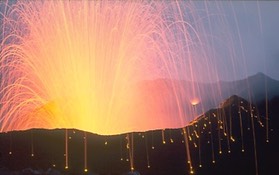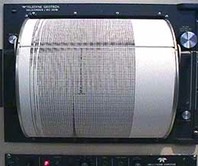Introduction

Geologic disasters can be spectacular marvels, especially when they are happening remotely from you!
One of the things that instills fear among people concerning volcanoes and earthquakes is that they are difficult, if not impossible, to detect. In this manner they seem much like ticking time bombs. Perhaps in the near future scientists will be able to detect these events and help to bring piece of mind to millions of people across the world.
Task

You will be placed in groups of three. One person will research a famous example of a volcanic eruption. The second will research a famous earthquake, and the last person will research current techniques being used to both monitor and attempt to predict future occurrences of either earthquake or volcanoes (the group should decide which one to use- you should justify your choose in the project). Together ALL partners will brainstorm possible new innovations that may be used in the future to predict the type of disaster you’ve been researching.
Together, you will come up with a Power Point presentation that explains the historic disasters, the current techniques to monitor or predict, and, most importantly, your idea for a future technology. The presentation audience is the people to whom you are “pitching” your proposal for the new technology. The new device should not be an afterthought. It will be where the group gets to demonstrate your collective knowledge of the hazards associated with plate boundaries.
Procedure

Select your assigned role for individualized, detailed procedures.
Historic Earthquakes or Volcanoes - links to use to research these past events
Monitoring Earthquakes and Volcanoes - links to help research current practices
Then come back to look at the procedures for your part together.
As a group, you should discuss what you learned collectively about how plate tectonics result in the formation of volcanoes or earthquakes and the current monitoring techniques in place. With this knowledge come up with a plan for a future technology.
Requirements for “future technology"
Evaluation
Total Points 100
100 points for the presentation
20 points for peer evaluations
30 points for individual research notes
Click here for a complete rubric for the presentation and how peer evaluation points are awarded.
Conclusion
The lives of many people may rest in the development of future seismic predictions. While your contributions today are pure science fiction, the realities of today often start with the fiction of yesterday. Who knows what the future may bring for predictive technologies.
All images are copyright free from the USGS.